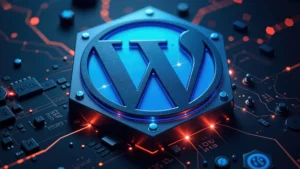Description
Website speed has become a crucial ranking factor for search engines like Google. A fast-loading WordPress site not only enhances the user experience but also improves your SEO rankings, ultimately leading to more traffic and conversions. If you’re looking to optimize your WordPress site speed in 2025, this guide will walk you through proven techniques to achieve lightning-fast performance.
Understanding the Importance of SEO
Search Engine Optimization (SEO) is the practice of improving your website’s visibility on search engines. A well-optimized website ensures that your target audience can find you easily, leading to increased traffic, engagement, and conversions. In today’s competitive digital landscape, SEO helps businesses:
- Rank higher in search engine results.
- Attract more organic traffic.
- Build credibility and trust with users.
Speed optimization is a critical aspect of SEO because search engines like Google prioritize fast, user-friendly websites.
Why Speed Matters for SEO
1. Choose a Fast Hosting Provider
Your hosting provider plays a significant role in your site’s performance. Opt for a hosting solution tailored to WordPress, such as:
- Managed WordPress hosting.
- Cloud hosting.
Popular options include SiteGround, WP Engine, and Bluehost, known for their speed and reliability.
2. Use a Lightweight Theme
A bloated theme with unnecessary features can slow down your site. Instead, choose a lightweight and optimized theme like:
- GeneratePress
- Astra
- Neve
These themes prioritize speed without compromising functionality.
3. Install a Caching Plugin
Caching plugins store static versions of your pages, reducing server load and improving load times. Recommended caching plugins include:
- WP Rocket
- W3 Total Cache
- LiteSpeed Cache
For example, WP Rocket users report an average speed improvement of 50-70% after implementation.
4. Optimize Images
Large, uncompressed images can drastically slow down your website. Use tools or plugins to compress images without losing quality:
- ShortPixel
- Imagify
- Smush
Also, serve images in modern formats like WebP for faster loading. Websites that use optimized images often see up to a 30% reduction in page load times.
5. Enable a Content Delivery Network (CDN)
A CDN distributes your website’s static content across multiple servers worldwide, reducing latency and speeding up load times. Popular CDNs include:
- Cloudflare
- BunnyCDN
- StackPath
Sites using CDNs typically experience a 40-60% improvement in load speed for global users.
6. Minify CSS, JavaScript, and HTML
Minification removes unnecessary characters from your site’s code, making it smaller and faster to load. Use tools or plugins like:
- Autoptimize
- WP Rocket (includes minification features)
7. Update Plugins and Themes Regularly
Outdated plugins and themes can slow down your site and pose security risks. Update them regularly to ensure compatibility and optimal performance.
8. Reduce HTTP Requests
Too many HTTP requests can slow down your site. Combine CSS and JavaScript files, and disable unnecessary plugins to minimize requests. On average, reducing HTTP requests can cut load times by 20-30%.
9. Use Lazy Loading
Lazy loading ensures that images and videos load only when they’re visible on the user’s screen. This reduces the initial load time and improves performance. Plugins like WP Rocket and Lazy Load by WP Rocket can help. For instance, enabling lazy loading can reduce initial page size by up to 35%.
10. Optimize Your Database
A cluttered database can slow down your site. Use plugins like WP-Optimize or Advanced Database Cleaner to remove unnecessary data, such as spam comments and post revisions. Regular database optimization can improve load times by 10-15%.
11. Enable GZIP Compression
GZIP compression reduces the size of your website’s files, making them load faster. Most caching plugins or hosting providers offer this feature. For example, enabling GZIP can reduce file sizes by up to 70%, significantly boosting performance.
12. Use Performance Monitoring Plugins
Plugins like Query Monitor and Debug Bar can help you identify and fix performance bottlenecks, including slow queries, scripts, or plugins causing delays.
13. Implement AMP (Accelerated Mobile Pages)
Accelerated Mobile Pages (AMP) plugins, like the official AMP plugin for WordPress, create fast-loading, stripped-down versions of your site’s pages for mobile users, improving load times significantly.
14. Monitor Site Performance
Regularly monitor your site’s speed and performance using tools like:
- Google PageSpeed Insights
- GTmetrix
- Pingdom
These tools provide insights and recommendations for further optimization. For example, GTmetrix often highlights opportunities to save over 1 second in load time by fixing critical bottlenecks.
Conclusion
Speeding up your WordPress site is an ongoing process that requires consistent monitoring and optimization. By implementing these techniques, you’ll not only improve your site’s SEO performance but also deliver a seamless user experience, giving you a competitive edge in 2025.



